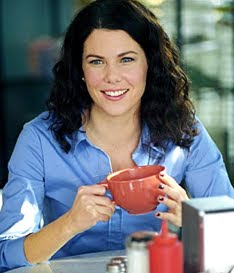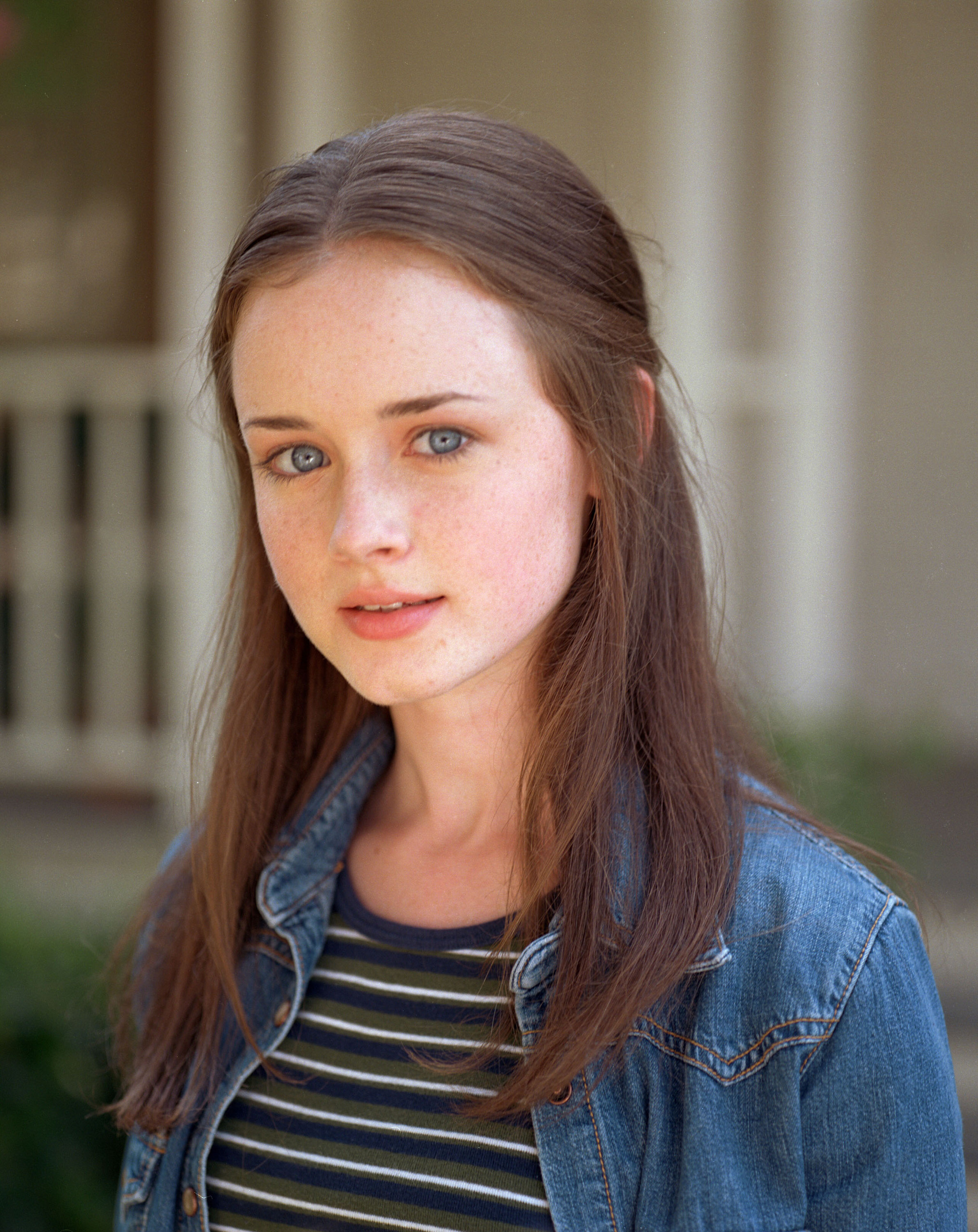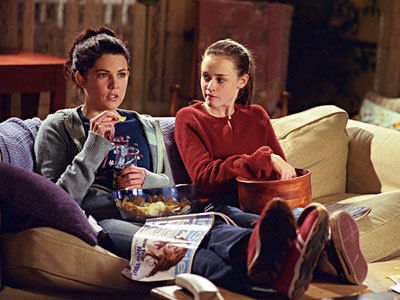 |
| Lorelai Gilmore (Lauren Graham) |
This is a guest post from Megan Ryland.
For me, no television mother springs to mind faster than Lorelai Gilmore of the long running show The Gilmore Girls. In fact, what is arguably so special about the show is that it offers a popular mainstream venue to focus on mothering, and especially the challenges of mother/daughter relationships. Of course mothers are a constant feature in the media (how else would mothers know how to behave!?) but teenagers are rarely depicted as having a positive relationship with their mother. Rory and Lorelai have a tight bond that remains the central focus of the show despite relationship drama for both mother and daughter. They also bring in the dual roles of mother and daughter when Lorelai interacts with her own mother, Emily.
 |
| Rory Gilmore (Alexis Bledel) |
Lauren Graham plays Lorelai, an over-caffeinated, high energy manager of a successful inn. As her daughter Rory, Alexis Bledel is a teenager striving more for a Harvard acceptance letter than a date, who has inside jokes with her mother, and clearly thrives in this single mother household. Lorelai’s status as a single mother is important because we are reminded time and time again that Lorelai has created a life that she (and her daughter, and the rest of the townsfolk) finds satisfying and valuable. This is a very different portrayal of the consequences of teenage motherhood.
Although coming from money and privilege, Lorelai left behind the trust fund life when she had Rory at 16. She rejected her parent’s assistance, refused to marry Rory’s dad, and struck out on her own. This further soured Lorelai’s already poor relationship with her own mother, Emily Gilmore, but has not led to Lorelai being a “Bad Mother.” There are many factors that allow for this, including racial, geographic, cultural, class, etc. For example, as a young white woman with the cultural capital of high class status, Lorelai is able to dodge stereotypes and the accompanying discrimination that a young woman of colour and/or low socioeconomic standing might face. This is an unspoken advantage that may allow viewers to accept Lorelai as a successful single mother. However, I still believe that the representation of Lorelai as a mother who has done a great job raising a child without the aid of huge financial resources or a masculine figure is a major plus for the show. And of course her position as a single mother remains difficult. In fact, the impetus of the show is that the lack of financial resources for Rory’s schooling brings all three generations of Gilmores back together, because Lorelai asks her parents to help pay for Rory’s elite education and in exchange her parents re-enter her life.
 |
| Movie night with the Gilmore Girls |
Rory and Lorelai have a very complex relationship. Rory is occasionally mothering Lorelai, but it is never a permanent role. Superior experience is always on Lorelai’s side and she is able to act as mentor to Rory as she grows up. Lorelai doesn’t always advise her in the most conventional ways, but I would argue that she rarely verges into juvenile territory while parenting. Her temperament is youthful, while Rory’s is much more mature for her age, but they remain a mother/daughter team, and a best friendship. Again, this sort of bond is rare. I think that it’s valuable for a show on a network aimed at young people (WB and then CW) to contain positive relationships between parent and child.
In the first season, they deal with questions of how Lorelai can date as a mother, and how she can share the space that she has carved out for herself and Rory with a romantic partner. This is an important question, and one that is realistically complicated (of course, it’s also made unreasonably complicated by the necessary hijinks of television). Lorelai and Rory are given scenes where they discuss their needs, desires and challenges. Furthermore, Lorelai is accepted as a sexual being who can also be a good mother. I would call that a win.
What is arguably more common on television is the relationship between Lorelai and her mother, Emily Gilmore. Many rants and screaming matches are conducted between them, as their relationship appears based in constant misunderstandings. However, despite estrangement and resentment, the relationship between Emily and Lorelai is arguably never unsalvageable. No one can really write off this bond, because Emily and/or Lorelai occasionally show that they do indeed care for and value one another.
 |
| Emily Gilmore (Kelly Bishop) |
Emily is first seen as a stereotypical suffocating, judgmental, harpy of an older mother, except when she becomes vulnerable and shows that she works hard to keep up appearances. She is bedridden when Lorelai runs away, she attends her granddaughter’s 16th birthday despite hurt feelings, and most of all, she is concerned that she might lose her family. She is far more complex than the typical older woman caricature and Kelly Bishop does a fantastic job with the role. Viewers can potentially sympathize with Emily’s ideals (often a product of her time and upbringing) and her feelings of exclusion from her daughter and granddaughter’s lives, even if they can’t identify with her strategies for keeping them close. At the same time, fans can also understand why Lorelai ran from the privileged life that she had grown up with, as well as the difficulties that accompanied that choice.
Arguably Emily was a type of lone parent, as Lorelai’s father was a typical career man who barely had time to put down the paper or end the conference call for meals. Although Emily was privileged to have a number of servants and nannies at her disposal, the fathering provided by Mr. Gilmore appears to have been very limited. As the most involved parent by far, Emily’s mothering has not fostered an obvious bond, showing that this connection is not inevitable. What Rory and Lorelai have takes work and is very special. It’s not a natural given.
The show allows for an exploration of motherhood from a variety of angles. An important aspect is the interplay between the daughter and mother roles. Throughout its many seasons, all three Gilmore women are placed in daughter and mothering roles. For example, in one scene in the first season, Rory is missing after a dance and Emily accuses Lorelai of raising a child as wild and irresponsible as herself. Lorelai defends Rory and says that she trusts her daughter, acting as a daughter herself in a situation with her mother. However, when Emily leaves and a contrite Rory appears, Lorelai acts as the mother terrified for her missing child and admonishes Rory. The transition between daughter and mother happens in a few minutes and it’s not only beautifully acted, but also representative of the dual(+) roles that many mothers play. You are never just a mother. You are also a daughter, whether or not your mother is always present. You parent with a history as a child. It’s a fantastic scene and shows part of the complexity of a mother’s role.
 |
| Three generations of Gilmore Girls |
The interactions between Emily, Lorelai and Rory Gilmore make the show Gilmore Girls a unique offering. Rarely do popular shows for young people focus on the relationships between generations of women, or the role (and challenges) of contemporary mothering. Race and class issues abound in the show, which should be unpacked, but as a forum for understanding some aspects of mothering and honouring mother/daughter bonds, Gilmore Girls is fantastic.
Megan Ryland is currently completing her BA, focusing on politics, women and gender. She writes about feminism, body image, and media analysis on her blog, http://beautyvsbeast.wordpress.com. She also releases the weekly show Hello City! Culture Cast, a Vancouver-based podcast that reviews movies, theatre, concerts and more.

i love your take on this. i miss this show so much.